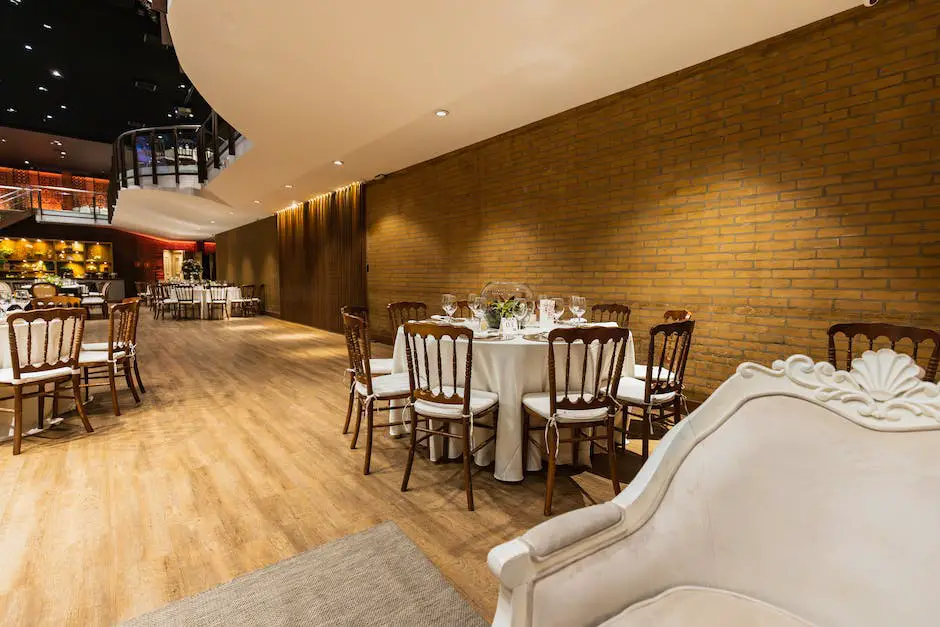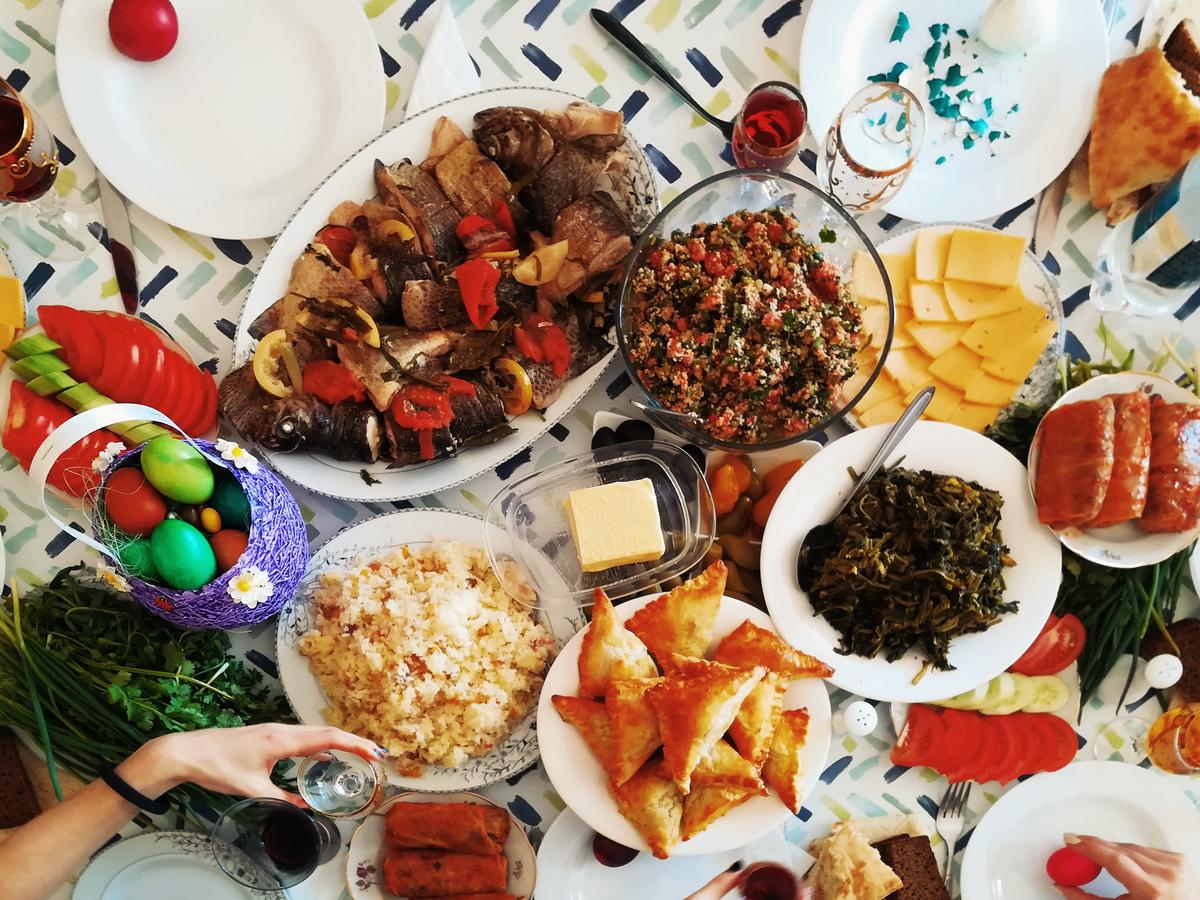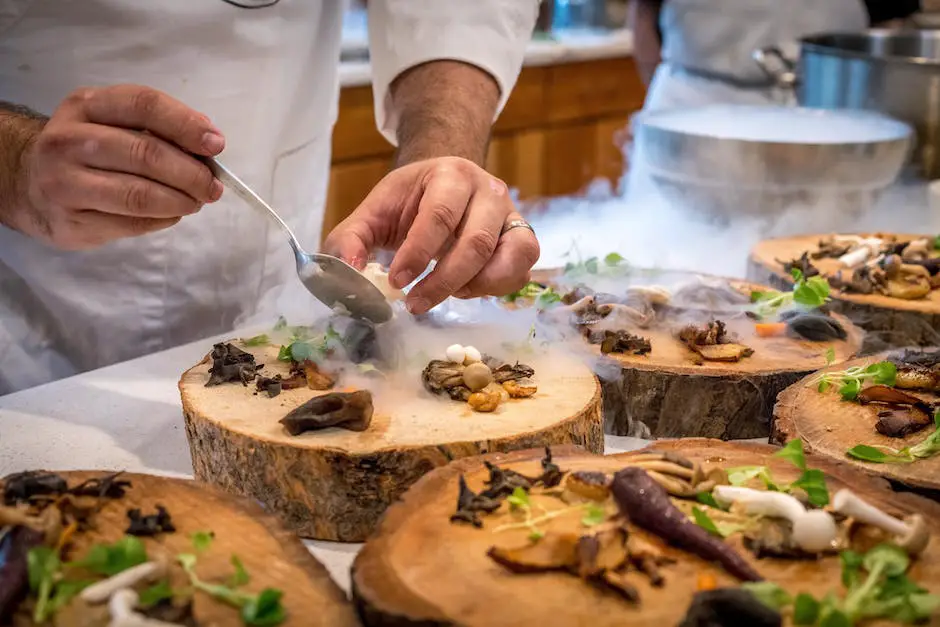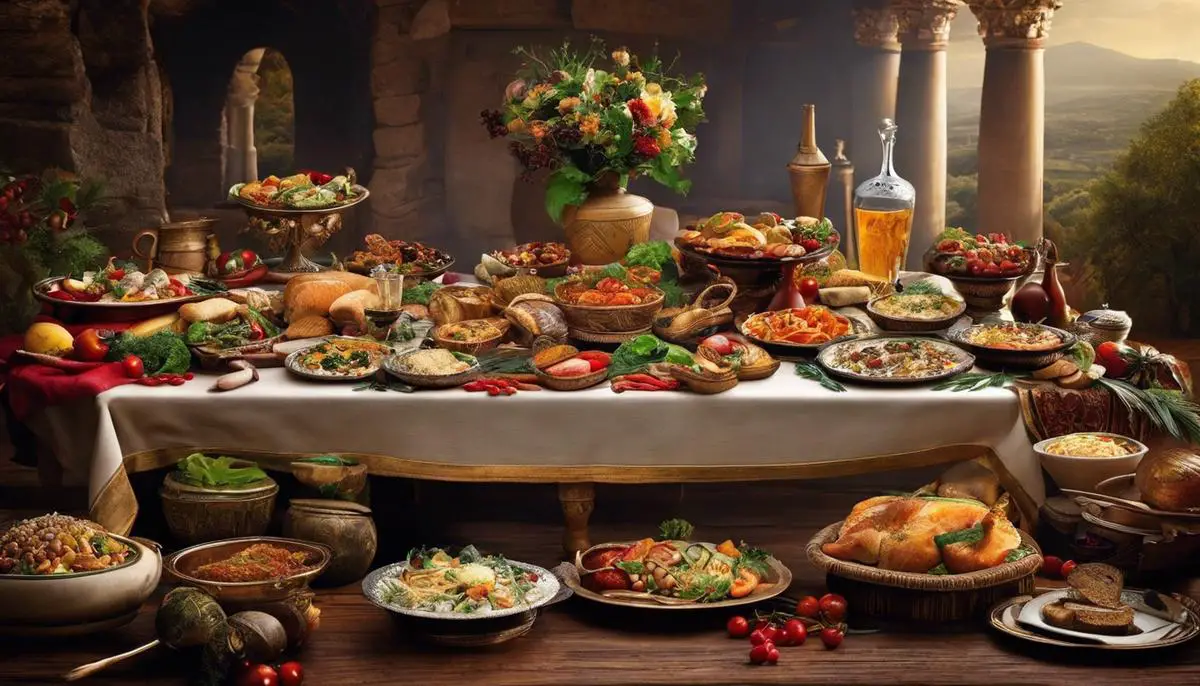Gathering around a table laden with an abundance of food, guests chatter with anticipation—an age-old ritual that transcends cultural boundaries and epochs. This traditional practise, known as a feast, has thread through the tapestry of human history, embedding itself as a staple of celebration and social operation. In delving into the origins of feasting, one uncovers a narrative bustling with the opulent banquets of the Greeks and Romans, where feasting was intricately tied to the spheres of politics, religion, and societal stratification. The types of food served were not merely for nourishment; they narrated a story of power and piety, taste and tradition. By unravelling these threads, we glimpse into the very essence of how our ancestors commemorated and the profound impact these occasions have upon our modern culinary endeavours.
Origins of Feasting
A Delectable Journey: From Historical Feasts to Modern Gastronomy
Embark on a tantalising journey through time, tracing the origins of the ceremonies and the opulent feasts that have sculpted the contours of today’s culinary landscape. As seasoned connoisseurs of the restaurant scene know, modern gastronomy did not simply emerge from the ether; it is the sumptuous offspring of grand historical banquets, where every dish tells the story of evolution and cultural cross-pollination.
Cast your mind back to the grandiose feasts of antiquity—those of Roman emperors and Egyptian pharaohs where extravagance knew no bounds. These tables groaned under the weight of exotic ingredients transported along the Silk Road, whispering tantalising secrets from distant lands. The Romans introduced the world to the ‘Gustatio’, a starter to whet the appetite—could one consider this the precursor to our appetiser course? You may very well think so!
Fast forward to the medieval period, where European feasts became the stage for displaying power and wealth. An array of spices like saffron and pepper, as rare and precious as jewels, infused meals with an air of exoticism and affluence that only the wealthiest could afford. The medieval love of spectacle and surprise in dishes such as the four-and-twenty blackbirds baked in a pie, finds its echo in molecular gastronomy’s showmanship. Think of that the next time you gaze in wonder at a cloud of liquid nitrogen wafting across a tabletop!
Banqueting in the Renaissance era refined the taste for complex flavours and artful presentation, setting the scene for today’s emphasis on aesthetics and balance. Banquets were a theatre of the senses with meticulously crafted sugar sculptures and tiered pies, displaying not only culinary skill but immersing diners in a feast for the eyes—a philosophy modern fine dining holds dear.
European colonialism expanded the culinary repertoire further, blending the staple ingredients and culinary techniques from occupied lands, to introduce vibrant new flavours. Consequently, modern fusion cuisine is deeply indebted to these colonial-era culinary exchanges, continuing the trend of mixing diverse food traditions into a harmonious dining experience.
Despite the evident transformations, the legacy of historical feasts is clear in present-day gastronomy. Today’s elaborate tasting menus, wine pairings, and the continual search for novel ingredients stem from the rich tapestry of feasts that came before.
Moreover, the current emphasis on farm-to-table fresh produce and artisanal techniques is simply a return to the gastronomic wisdom of yore, where locality and seasonality were not just trends, but the essence of survival and celebration.
From the over-the-top banquet halls to the intricate plating of the modern restaurant, every morsel one indulges in is redolent with history’s flavours. The high standards of service, the theatre of dining, and the merging of global tastes—all have their roots deeply embedded in historical feasts that once set the world’s tables.
Thus, in every bite of contemporary cuisine, is savoured the spirit of a bygone era, a tribute to the ancestors who first laid the great tables and composed the symphonies of taste that continue to inspire and delight palates across the globe. Raise your glasses to the historical feasts that have, through ages and evolution, bestowed upon us the eclectic and exquisite gastronomy of today. Cheers to the timeless interplay of food and culture, and the endless possibilities of tomorrow’s table. Bon appétit!

Feasting Through the Ages
The Feast of Nations: Unearthing the Culinary Gems of Medieval and Renaissance Revelry
As the tendrils of time wind back to the grandeur of Medieval and Renaissance banquets, one discovers a veritable cornucopia of gastronomic innovation that bridged cultures and reshaped the culinary landscape of Europe. These eras, marked by opulent displays of wealth and status, saw monarchs and nobility partaking in feasts that were nothing short of spectacular theatrical performances where food was both star and stage.
During these times, feudal kingdoms reveled in ostentation, and the banquet table served as a battleground for showcasing prosperity and power. Amid the regal pomp and circumstance, these gatherings were significant platforms for the exchange and assimilation of foreign flavors and ingredients, reflecting an underlying narrative of exploration and conquest.
At the heart of these banquets lay the nexus of European and Eastern delicacies, a testament to the burgeoning trade routes stretching towards Asia and beyond. The Silk Road, an ancient network of trade passages, brought forth a plethora of novel ingredients to European tables. Spices such as peppercorns, cinnamon, and nutmeg, once worth their weight in gold, seasoned hearty stews and graced the plates of the elite, imparting exotic flavors and preserving meats in an age before refrigeration.
The opulence of these feasts knew no bounds; sugar, a precious commodity at the time, was transformed into sculptural masterpieces. Subtleties, intricate confections crafted to mimic objects, animals, and scenes, demonstrated culinary artistry and provided entertainment for the eyes and palate. Marzipan, now a confectionary staple, took its first European bows in the form of fruits and figures, colored with natural dyes and displayed to evoke awe and admiration.
Alongside these sweet spectacles, the New World’s bountiful discovery brought a tsunami of unfamiliar and exciting produce to European kitchens. Tomatoes, potatoes, and chocolate made reluctant entrances—greeted initially with suspicion—but ultimately revolutionized diets and became fixtures in various cuisines.
Venison, boar, and other game meats, prominent on medieval banquet menus, were often presented in grandiose fashion—entire roasted animals adorned with their respective hides and antlers, creating a visceral spectacle. Accompanying these were an array of pies, the ancestors of the beloved pâté en croûte, filled with minced meats, fruits, and spices, encased in rich pastries as much a feast for the senses as they were a meal.
The communal aspect of dining, too, was paramount in these elaborate spreads. Trenchers, thick slices of stale bread, served as plates, absorbing the juices of the abundant fare and emphasizing the shared dining experience that transcended mere sustenance.
As Renaissance thinkers ventured towards a human-centric worldview, the table mirrored this shift. Dining etiquette became increasingly refined, with detailed codes of conduct shaping manners and the architecture of the meal. Cutlery fashioned from precious metals replaced rudimentary tools, and glassware, once a luxury, became commonplace, showcasing the clarity of fine wines and ales.
The fusion of traditions during these ages has profoundly influenced modern gastronomy, sowing seeds of creativity and innovation that continue to sprout in today’s culinary scene. Modern chefs, much like the master cooks of yore, draw from a global pantry, reinterpreting the past and daring to envision the future one plate at a time.
In essence, the banquet tables of the Medieval and Renaissance epochs were more than just a display of sumptuous fare; they were cultural canvasses that chronicled the epic tale of gastronomic exchange, a saga that remains deeply stitched into the fabric of contemporary cuisine. These historical banquets, therefore, were not only a testament to the tastes of the times but were pivot points for culinary progression that cuisine connoisseurs continue to relish and dissect with fervour.

Cultural Significance of Feasts
Delving further into the illustrious tapestry of culinary heritage, one cannot overlook the indelible mark left by the cultural ritual of feasting on today’s tablescapes. Cast your gaze across the myriad nations and communities of our world, and you’ll discover a myriad of feasts that continue to carve out cultural identities with the same fervour as a master chef sculpting a block of artisanal cheese.
The celebration of local harvests is one such phenomenon worthy of note – a homage to terroir if there ever was one. Seasonal festivities not only dictate the menu but are also imbued with ancestral narratives. Harvest festivals from the wine regions of Bordeaux to the rice paddies of Bali, affirm a collective identity and sustain local food lore.
Indeed, the present culinary scene would pale without its revered festive mainstays. Take, for example, the delectable mooncakes of the Mid-Autumn Festival, emblematic of Chinese culture, or the venerated Christmas pudding, a perennial nod to the British Yuletide tradition. These dishes are more than mere sustenance; they are artifacts that chronicle human civilisation.
Cultural identities are also entwined with religious festivals, where the act of sharing a meal elevates to a spiritual communion. Consider the breaking of bread during Eucharist or the iftar during Ramadan. Each bite transcends earthly pleasure, deepening communal bonds and reinforcing spiritual ethos.
Moreover, amidst a globalised food economy, diasporas have steered the veneration of cultural feasts into fresh waters. For instance, Thanksgiving, with its New World roots, has burgeoned into a global phenomenon. The stuffed turkey, an icon of Americana, settles onto dinner tables worldwide, a delicious envoy of cultural exchange.
While one could marvel endlessly at the past’s great dining extravaganzas, it is pivotal to acknowledge the influencers of modern feasting. Street food festivals celebrate culinary diversity, bringing Michelin star fare and local street vendors to a common battleground, catapulting traditional cuisine into mainstream consciousness.
Similarly, food competitions and cookery shows have become the colosseums of gastronomy. They spotlight regional cuisines and encourage innovation, all the while weaving the narrative of a culture’s evolutionary journey through food.
To conclude, feasts are far more than a tableau for the decadent play of flavours. They are cultural vignettes, steadfastly contributing to the living narrative of who we are as a people. In the delectable dance of courses and condiments, feasters and chefs alike partake in a ritual as ancient as time, each savouring the joy that comes from a dish that tastes unequivocally like home.

Notable Feasts in History
Venturing beyond well-trodden paths of gastronomy, it is essential to spotlight historical gastronomic events that shaped the palates of societies and carved indelible marks on cultures worldwide. Among these, few have influenced modern culinary norms as much as the sundry practices of the Ottoman Empire, which perfected the art of feasting with an unrivalled zeal for variety and flair.
An oft-overlooked titan of historical gastronomy, the Ottoman Empire’s cuisine was a symphony of color, texture, and flavor that enraptured the senses. With access to myriad ingredients through expansive trade networks, their kitchens became alchemical workshops where the East met West in a potpourri of tastes. Riding on the back of this diversity, the Ottomans mastered the use of fruits in savoury dishes, as seen in the enduring popularity of apricots in lamb stews and rosewater in desserts, setting a trend for sweet and savoury fusion that carries through to today’s most innovative menus.
Across the channel, the iconic Victorian era introduced opulence at the dining table with a rotating series of courses during state banquets, an embodiment of England’s wealth and fine taste. The hallowed ‘à la Russe’ service, where dishes are served sequentially rather than all at once, stands as a transformative moment for fine dining. Reflecting on the resultant modern tasting menus, one cannot help but acknowledge the Victorian influence that revolutionised and refined the rhythm of fine dining, leading us into the age of the degustation menu.
Culinary pillars crafted in Ancient China must also be extolled, with feasts that celebrated the philosophical and medicinal values of food and where dietetics interlaced with culinary pleasure. Ornate imperial banquets presented intricate dishes artfully arranged to signify harmony and health. These practices resonated down the centuries, echoing in today’s menus that emphasize balance and well-being as much as taste.
The enigmatic Aztec feasts, too, tell a tale of food that was not just sustenance but a means of communion with divine entities. The offering and consumption of food intertwined with spirituality and reverence, a communal rite from which one sees the skeletal framework of today’s social dining experiences, a remnant of the concept that to eat is to engage in something beyond the corporeal.
Tracing through these magnificent epochs of culinary excellence, it’s clear that each occasion folded into the next, contributing threads to the rich tapestry of modern cuisine. From the Ottoman’s fruit-infused meats to Victorian serial dining, each feast has carved a niche in the annals of culinary history. Underpinning each, an eternal truth—cuisine is not merely a chronicle of tastes, but an unspoken storytelling of humanity’s collective journey, translating across the ages into the vibrant, unceasing innovation on the plates in front of us. We, the current beneficiaries of this grand tradition, stand as both guardians and creators, perpetuating the saga of feasting through our daily sustenance and celebratory repasts. Bon appétit!

Modern Day Feasts: Evolution and Trends
The Romance of Umami: A Modern Culinary Renaissance
As modern banquets unfold across polished tables, they carry with them an evanescent whisper from the zenith of the Ottoman Empire. Here, the cross-pollination of culinary techniques and a penchant for integrating sweet with savory brought to life palatable masterpieces that have informed the contemporary love affair with umami. A rich tapestry of meats melded with fruits and honey, now embodied in modern duck à l’orange or a flavourful tagine — dishes that wouldn’t dare shy away from apricots or figs, blending the sweet and savoury notes to thrill the most discerning palates.
It’s not merely a case of resurrecting ancient recipes. Instead, today’s chefs, driven by an insatiable curiosity, continuously deconstruct and reimagine these traditions. The à la Russe service, a ritual popularised during the Victorian era, has its fingerprints on the procession of individual courses, allowing each dish to declare its own narrative and providing the diner with a tempo for their gustatory experiences.
Venturing eastward, the medicinal lore and philosophical doctrines of Ancient China still influence the balance and harmony found in dishes worldwide. The ubiquitous yin and yang of flavours hold strong, giving rise to culinary trends that champion the fusion of opposing but complementary tastes, creating symmetry and satisfaction on the palate in ways that pair the fiery kick of chilli with the cooling caress of coconut milk.
Mesoamerica, crowned by the grandeur of Aztec feasts, has bequeathed to modernity not just staples like maize and beans, but also the subtler nuances of spirituality that infuse each meal. This mesmerising synergy of food and communion remains ever-relevant, as grand barbecues and festive banquets continue to serve not just sustenance, but a sense of togetherness and purpose, transcending the mundanity of everyday eating into an almost otherworldly ritual.
Undeniably, the lineage of global gastronomy is a path woven tight with the threads of countless civilisations. Each spoonful of today’s cuisine is an archive of flavours: a culinary palimpsest revealing histories both vast and localised. As one savours the complex tang of kimchi or the velvety subtlety of French terrines, one must acknowledge the journey of totality, the collective human saga unfurled within the depths of those very dishes.
The narratives etched in the grains of aged rice fields, the succulence of sun-drenched olives, and the sweet poetry of vine-ripened grapes serve as a testament to the chapters of culinary evolution. In the vibrant patchwork of world cuisine, every bite is an ode, each taste a tribute, to the interconnected culinary saga that maps the emergence of civilization.
As forks dive into the latest avant-garde creations, as spoons swirl through broths imbued with ancestral knowledge, it stands – modern feasting owes an immutable debt to the age-old banquet tables. With every innovative dish that graces current menus, the echoes of ancient festivities resound, and in this sumptuous echo, one finds the heart of culinary passion—a relentless pursuit of the deliciously unknown, forever pushing the boundaries of taste.

As we have traversed the historical panorama of feasts, it becomes abundantly clear that the essence of a good feast has perpetually been the weaving together of people and their stories, alongside the spices and savours of the age. The smorgasbord of today’s culinary scene owes much to the grand banquets of yore, with their flamboyant displays of gastronomical expertise and flair for presentation. As traditions morph and diets evolve, the feast remains an unshakeable pillar of culinary culture. The contemporary banquet table still heaves with the generosity of spirit and the bond of community, a testament to the enduring nature of feasting and its ability to reinvent itself for each generation. And so, the feast carries on, a symbol of the collective human experience, reflecting on the past, savouring the present, and anticipating the flavours yet to come.
